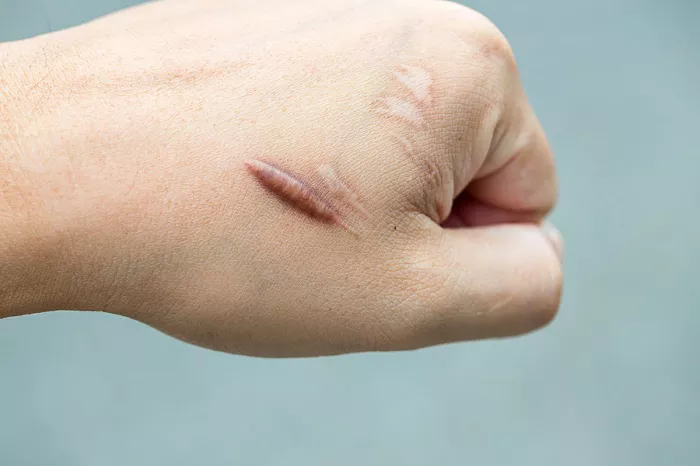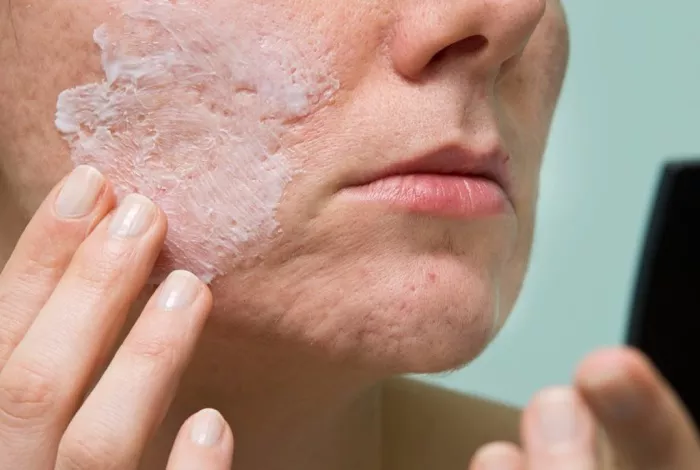Pimple marks, also known as acne scars, can be a source of frustration and self-consciousness for many individuals. While pimples may eventually fade away, the marks they leave behind can linger for an extended period. Fortunately, there are various strategies and treatments available to help reduce and remove pimple marks, restoring smooth and clear skin. In this comprehensive guide, we will explore effective methods for dealing with pimple marks and achieving a more even complexion.
1. Understanding Pimple Marks: Types and Causes
Before delving into treatment options, it’s essential to understand the different types of pimple marks and the underlying causes. Pimple marks can manifest in various forms, including hyperpigmentation, atrophic scars, and hypertrophic scars.
Hyperpigmentation occurs when an inflamed pimple leaves behind dark or red marks. This discoloration is caused by an overproduction of melanin in response to inflammation. Atrophic scars, on the other hand, are depressions or indentations in the skin that result from a loss of tissue during the healing process. Hypertrophic scars are raised, thickened scars that occur when the body produces too much collagen during the healing process.
The causes of pimple marks are multifactorial. Picking or popping pimples can lead to increased inflammation and a higher risk of scarring. Additionally, individuals with a genetic predisposition to scarring may be more prone to developing pimple marks. Finally, inadequate or improper treatment of acne can also contribute to the formation of pimple marks.
2. Prevention: The First Line of Defense
Preventing the formation of pimple marks is crucial in the management of acne. By taking proactive measures to minimize acne breakouts, you can reduce the likelihood of developing severe pimple marks. Here are some essential prevention strategies:
a. Maintain a Consistent Skincare Routine: Cleanse your face twice a day using a gentle cleanser suitable for your skin type. Follow up with a non-comedogenic moisturizer to keep your skin hydrated without clogging pores.
b. Avoid Picking or Popping Pimples: It can be tempting to squeeze or pop pimples, but this can exacerbate inflammation and increase the risk of scarring. Instead, allow pimples to heal naturally or seek professional assistance for safe extraction.
c. Protect Your Skin from the Sun: Exposing pimple marks to the sun can worsen hyperpigmentation and delay the fading process. Apply a broad-spectrum sunscreen with at least SPF 30 daily, even on cloudy days.
d. Use Non-Comedogenic Products: Opt for skincare and cosmetic products labeled as non-comedogenic, meaning they do not clog pores and contribute to acne formation.
e. Manage Stress Levels: Stress can trigger acne flare-ups, so incorporating stress-management techniques such as exercise, meditation, and adequate sleep can help reduce the frequency and severity of breakouts.
3. Topical Treatments: Targeted Solutions
Topical treatments can be effective in fading pimple marks and promoting skin healing. These treatments typically contain ingredients that help reduce inflammation, fade hyperpigmentation, and stimulate collagen production. Here are some key ingredients to look for in topical treatments for pimple marks:
a. Retinoids: Derived from vitamin A, retinoids promote cell turnover, stimulate collagen production, and fade hyperpigmentation. Over-the-counter retinol or prescription-strength retinoids can be used to target pimple marks.
b. Vitamin C: An antioxidant, vitamin C helps brighten the skin and fade hyperpigmentation. Look for serums or creams containing stable forms of vitamin C, such as L-ascorbic acid.
c. Hydroquinone: This skin-lightening agent inhibits the production of melanin, effectively reducing hyperpigmentation. Hydroquinone should be used under the guidance of a dermatologist, as it may cause skin sensitivity in some individuals.
d. Alpha Hydroxy Acids (AHAs): AHAs, such as glycolic acid and lactic acid, exfoliate the skin, promote cell turnover, and fade hyperpigmentation. Incorporating AHAs into your skincare routine can help improve the appearance of pimple marks.
e. Azelaic Acid: Azelaic acid has both anti-inflammatory and skin-lightening properties, making it effective in reducing pimple marks. It also helps regulate sebum production, reducing the occurrence of acne breakouts.
It’s important to note that results from topical treatments may vary depending on the severity of pimple marks and individual skin characteristics. Consistency and patience are key when using topical treatments, as it may take several weeks or months to see noticeable improvements.
4. Professional Treatments: Dermatological Interventions
For more stubborn or severe pimple marks, dermatological interventions can provide significant improvement. Dermatologists can recommend and perform procedures tailored to your specific needs and skin condition, targeting pimple marks directly. Here are some commonly used professional treatments:
a. Chemical Peels: Chemical peels involve the application of a chemical solution to the skin, which exfoliates the top layer and stimulates collagen production. This can help fade pimple marks and improve overall skin texture. Different types of peels, such as glycolic acid or salicylic acid peels, may be used depending on the specific concerns and skin type.
b. Microneedling: Microneedling, also known as collagen induction therapy, involves the use of tiny needles to create controlled micro-injuries in the skin. This process stimulates collagen and elastin production, promoting the healing of pimple marks. Microneedling can be combined with the application of topical serums or platelet-rich plasma (PRP) for enhanced results.
c. Laser Therapy: Laser treatments utilize focused light energy to target and break down pigmented cells in pimple marks. This stimulates collagen production and helps fade hyperpigmentation. Different types of lasers, such as fractional laser or pulsed-dye laser, may be used depending on the specific concerns and skin type.
d. Dermal Fillers: Dermal fillers can be used to improve the appearance of atrophic scars, which are depressions in the skin. By injecting fillers into the scarred areas, the skin’s texture can be leveled, reducing the visibility of pimple marks. Hyaluronic acid fillers are commonly used for this purpose.
e. Subcision: Subcision is a minor surgical procedure that involves the insertion of a needle or cannula beneath the skin to break up scar tissue. This helps release the tethering that causes atrophic scars, allowing the skin to elevate and smoothen. Subcision can be combined with other treatments, such as microneedling or fillers, for optimal results.
It’s important to consult with a qualified dermatologist to determine the most suitable professional treatment option for your specific needs. These interventions may require multiple sessions and proper aftercare to achieve desired outcomes.
5. Home Remedies: Natural Approaches
In addition to medical and professional treatments, several home remedies may help fade pimple marks. While the scientific evidence supporting their efficacy may be limited, some individuals find them beneficial. Here are a few home remedies that you can try:
a. Aloe Vera: Aloe vera gel has soothing properties and may help fade hyperpigmentation when applied topically. Extract the gel from an aloe vera leaf and apply it to the pimple marks, leaving it on for 30 minutes before rinsing off.
b. Lemon Juice: Lemon juice contains natural bleaching properties due to its high vitamin C content. Apply freshly squeezed lemon juice to pimple marks using a cotton ball and leave it on for 10-15 minutes before rinsing off. Note that lemon juice may cause skin irritation, so dilute it with water if necessary and perform a patch test beforehand.
c. Honey: Honey has antibacterial and moisturizing properties that can promote skin healing. Apply raw honey directly to pimple marks and leave it on for 20 minutes before rinsing off.
d. Turmeric: Turmeric is known for its anti-inflammatory and skin-brightening properties. Create a paste by mixing turmeric powder with water or honey and apply it to pimple marks. Leave it on for 15-20 minutes before rinsing off.
While home remedies may provide some benefits, it’s important to remember that individual results may vary. It’s always best to consult with a dermatologist to ensure safe and effective treatment of pimple marks.
Conclusion
Pimple marks can be a persistent reminder of past acne breakouts, but they don’t have to be a permanent fixture on your skin. With the right prevention strategies, topical treatments, professional interventions, and home remedies, you can effectively reduce and remove pimple marks, revealing a smoother and more even complexion. Remember to be patient and consistent in your approach, and consult with a dermatologist to develop a personalized treatment plan. By taking proactive steps, you can regain confidence in your skin and achieve the clear, blemish-free complexion you desire.
[inline_related_posts title=”You Might Be Interested In” title_align=”left” style=”list” number=”6″ align=”none” ids=”3005,2955,2952″ by=”categories” orderby=”rand” order=”DESC” hide_thumb=”no” thumb_right=”no” views=”no” date=”yes” grid_columns=”2″ post_type=”” tax=””]



































